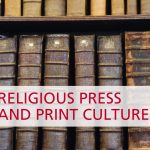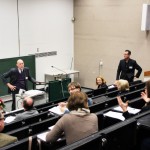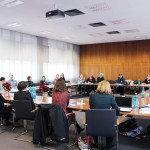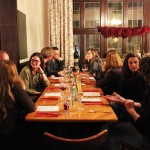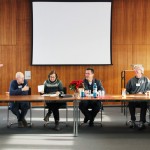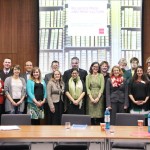Conference
Organizers: Prof. Oliver Scheiding and Anja-Maria Bassimir, M.A.
DFG Funded Research Project “Pluralism, Boundary-Making, and Community-Building in North-American Religious Periodicals,” part of the Research Group "Un/doing Differences" at the Johannes-Gutenberg University, Mainz, Germany.
Dates: November 19-22, 2014
Place: Johannes-Gutenberg University. Philosophicum, Jakob-Welder-Weg 18, 55128 Mainz. Fakultätssaal (room 01-185).
The Religious Press and Print Culture conference explored how, in an increasingly digital and paperless age, the study of religious print matter contributes to our understanding of both religions and religious communities in North America from the colonial period to the present. Located in the city and at the University of Mainz, where, with Johannes Gutenberg, print culture has a long tradition, the conference brought together an exciting round of international scholars presenting a wide range of papers on the US-American religious press. In the context of their research project “Pluralism, Boundary-Making, and Community-Building in North-American Religious Periodicals,” part of the DFG Research Group “Un/doing Differences,” the organizers, Oliver Scheiding and Anja-Maria Bassimir, were especially interested in mechanisms of religious differentiation and categorization, or how print products either facilitate or guide collaborations, new groupings, and divisions.
The interdisciplinary conference sparked fruitful discussions, centering on the overarching question “what is religious print culture?” The chronological conference design highlighted both the technological changes (from handwritten manuscript copies to printing to paperless communication) and the continuities of the press promoting communication and community-building.
The papers focused on three main and intersecting topics: economic aspects and market conditions, the materiality of print matter, and the communicational as well as communal aspects of the religious press. Questions raised by the conference were whether the religious press causes or merely mirrors political change; what the relationship of medium and message is; how the medium (print and later the internet), frequently praised for its democratizing function, is used to control a religious community; how paratexts guide reading; how material and economic aspects influence content; how the press creates and shapes communities of taste; or how emotive and performative aspects are used to form communities.
Conference Review by Jennifer Adams-Massmann at HSOZKULT
